0 Comments
The Solemnity of All Saints, Nov. 1 All Hallows’ Day, the Solemnity of All Saints, or All Saints’ Day is a celebration of all Catholic saints held on November 1 each year. “On this solemnity, we recall the holy men and women who, having completed their earthly journeys, now live forever with God. These saints, though not canonized, offer us models of abiding faith and love of God and neighbour” (Essential Guide to Seasons and Saints, 109). The Church teaches that by imitating the virtues lived by the saints, the saints brings us closer to Christ. When we ask the saints to pray for us, we ask them to join their wills with the will of God and intercede for us here on earth. This is the Communion of Saints which we profess every Sunday in the Creed. (Source: USCCB) Some resources for celebrating All Saints Day with your family:
Commemoration of all the Faithful Departed
(All Souls Day) - Nov2 All Souls’ Day, also known as “The Commemoration of all the Faithful Departed” is observed on Nov. 2. The faithful on earth can assist these purgatorial souls in attaining heaven through prayer, good work and the offering of Mass. At Mass on All Souls’ Day, we pray that through Christ’s loving mercy, God’s “departed servants…may be granted pardon and peace, and be brought to the joy of God’s eternal home. All Souls Day is an especially rich cultural experience for Hispanic/Latino Catholics, who call it “Día de los Muertos” or “The Day of the Dead.” Some resources for commemorating All Souls Day with your family:
On Sunday, Feb. 26, 2023 the whole community gathered to witness something truly special: a joyous Rite of Election that welcomed 170 catechumens into St Mary's Cathedral as members of the Elect! This event marked the culmination of their profound spiritual journey and preparation for receiving Initiation Sacraments at Easter Vigil.
The Bishop also calls to the Godparents, urging them to accept the responsibility entrusted to them in the Lord. He asks them to show their support and love for the chosen individuals by providing guidance and instruction so that they may partake in God's sacraments.
Let us pray to the Lord for all the Elect and for ourselves, that we may be renewed by one another’s efforts and together come to share the joys of Easter. 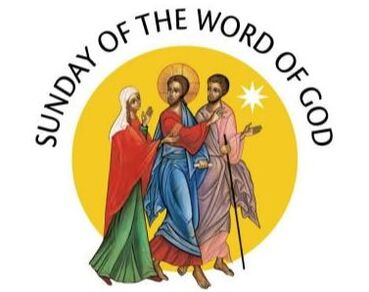 Pope Francis has declared that the Third Sunday in Ordinary Time is to be devoted to the celebration, study and dissemination of the word of God “that the life of our people be constantly marked by this decisive relationship with the living word that the Lord never tires of speaking to his Bride” (Aperuit Illis, 2). In 2024, the Sunday of the Word of God falls on January 21. 2024 Liturgical and Pastoral Handbook Here are five liturgical suggestions for making the most of this universal invitation from the Pontiff. 1. Homily Focus on the centrality of the Bible for Christians. In the Gospel, Jesus quotes what we heard in the first reading from the Prophet Isaiah. The word of the prophet is the foundation for his teaching and the call of the first disciples. In the second reading Paul tells the Corinthians that Jesus did not send him to baptize but to proclaim the Gospel and that “it is the power of God”. 2. Bless Ministers of the Word Following the Homily, invite ministers of the Word to stand (e.g. lectors, psalmists, leaders in RCIA, liturgy of the word for children, and scripture study). Bless them with hands extended: Blessed are you, Lord God, Source of all light and all goodness, you sent your Son, your living Word, to reveal to humanity the mystery of your love. Look with mercy upon these women and men who proclaim your word and lead your people closer to your teaching. Bless X them in their ministry so that they may be nourished by your Word, be transformed by it and faithfully announce it to their brothers and sisters in your Church. We praise and thank you, Father, in the name of Jesus your Son, and in the love of your Holy Spirit, God of glory for ever and ever. Amen. Adapted from the blessing of lectors in Celebrations of Installation and Recognition, copyright Concacan Inc.,2005. All rights reserved. 3. Universal Prayer Introduction to the petitions: Dear sisters and brothers, nourished and formed by God’s Word let us bring our needs and petitions before Him. In addition to the petitions you have prepared for today, include some for the Word of God to come to life in your community, for example:
Prayer at the end of the petitions: Grant, O God, that our lives be marked by your living word. Hear these, our prayers, and help us to proclaim the good news of the kingdom. Through Christ our Lord. Amen. 4. Eucharistic Prayer You might use Eucharistic Prayer III for Various Needs and Occasions (Jesus the Way to the Father). Its Preface focuses on Christ as the “Word” of God. Roman Missal p.764ff. 5. Enthroning the Bible (For use in homes, schools, and with RCIA or Bible Study groups) The faithful have shown reverence to the bible as the inspired word of God since ancient times. The enthronement of an open bible has often served as a symbolic invitation to delve into the sacred text as the source of our spiritual life. You might use this short ritual from the American Bible Society to enthrone the Bible at home, in schools, and with RCIA or Bible Study groups. 6. More Resources
Bishop McGrattan's homily at the Memorial Liturgy for those grieving the loss of a child through miscarriage and stillbirth, November 24, 2022 at St. Mary's Cathedral. In the communal life of the Church the witness of faith and belief in Christ is always confirmed in the following – “Faith if it is genuine works through love”. Another way of stating this truth is that in the Christian life our faith is to be expressed through acts of love. This evening those families who have gathered, parents, grandparents, and children are united in the painful reality that they have suffered the loss of a child through miscarriage or stillbirth. Despite this pain and grief which is shared by those here present they also witness to a communal act of love in the remembering of their children in prayer. This is also a genuine witness of faith to the sanctity of life. That all human life from conception to natural death is a gift from God who is the Creator. He is the author of all life and in Christ we come to know and believe that through his death and resurrection we receive the gift of eternal life from God the Father. This is the hope that must also unite us in the prayer of this memorial liturgy. In the Old Testament, the remembering in prayer of God’s salvific presence in the midst of his people was always an act of “anamnesis”. It is a spiritual remembering and an act of faith in which they experienced the very presence of God’s love. In the First Letter of John this evening we heard the sacred author reminding the early Christians of this same truth. “See what love the Father has given us, that we should be called children of God; and that is what we are”. Other translations of this passage replace “See” with “Remember”. This evening we remember the love that the Father has given these parents through marriage. A love in which He invites husband and wife to share in His “co-creative love”, to express mutual love for each other and to be open to bringing new life, children into the world.  This vigil celebration of prayer for those children who did not receive the gift of being born into a family are still known by God as his children, like us. Although you as parents did not receive the joy of knowing your children you do share the anguish, sorrow and despair of their loss. However, in the faith that we share in being disciples of Christ, the suffering we experience now will always be transformed by Christ and that “what we do know is this: when he is revealed, we will be like him, for we will see him as he is”. This is the hope that we pray will sustain us as it did the early Christians. In the Beatitudes Jesus teaches his disciples that despite the present circumstance of their life the future they desire will become one of blessing and happiness if they maintain their faith in Him. This is the faith that allows one to trust that the fullness of our life is revealed in Christ. This would have been the desire and the faith of these parents for the children that they have lost. To be baptized into the fullness of the life of Christ. At the conclusion of this liturgy we incorporate the sign of light, in the lighting of a candle. Light symbolized the dispelling of darkness, and spiritually it overshadows for believers the sadness of death. The light of the paschal candle for Christians symbolizes the eternal light of the resurrection of Christ. As you come forward to light the candles for your children and their names are proclaimed, you are uniting yourselves in this communal act of love in remembering the children you mourn, but also it is a sign of your genuine faith and belief in the resurrection of Christ for your children. We who gather support you in the loss of your children, but in faith and through our prayers, we pray that they now share in the eternal life of Christ and God the Father.
I remember the day a girl about my height with jet black hair bounded up my driveway asking to play. I was about five years old and shy. Lori was a high energy, outgoing six-year-old and we quickly became friends. For the next three years we had adventures, playing hide and seek and other childhood pastimes, sometimes getting into mischief together. In upper elementary, I remember finding out that the reason Lori acted differently is because she had fetal alcohol syndrome. But as young children that difference never factored in, in fact, in my eyes she was exciting and fun to be around. Knowing Lori was a gift I received early in my life. I’ve carried the memories we made together with me ever since. And I carried her in my heart as I made the pilgrimage from my home in Calgary to Edmonton for the Papal Mass on July 26, 2022. I prayed for Lori, one of my first best friends, an Indigenous girl who was innocently sentenced to a life clouded by the effects of a preventable syndrome. Lori was adopted and while she never attended residential school, it’s likely someone from her family tree had spent time at one of these schools. To me, her situation is an example from my own lived experience of the repercussions of residential schools felt through the generations. When we arrived at Commonwealth Stadium, the first thing we did was take a family photo to remember our family pilgrimage as we will continue to unpack its significance in the years to come. Next we found our seats, and while waiting for the Papal Mass to begin I noticed four middle-aged women sitting behind me wearing Every Child Matters orange and black t-shirts. Among them was Kelly Spooner who was not herself Indigenous, but came to honour the memory of her uncle (through marriage) who died in 2019 and attended residential school for six years. “I came for strength and to renew my spirit. It’s a part of history today,” said Kelly Spooner. Not long after, the Pope rode around the stadium greeting the crowd. Kelly ran down to the front gate to get a closer look. After he passed by she came back in tears, saying “I’m so happy he’s here.”  Amber Franco of Calgary with her family Amber Franco of Calgary with her family As the pre-Mass program was wrapping up, emcee Janelle Reinhardt asked the crowd to keep a prayerful silence. “The stadium truly became silent, it was powerful and profound, you could only hear the humming of the buildings. It was impressive in a crowd so large,” said Amber Franco, reflecting on this poignant moment. She drove from Calgary to Edmonton with her husband Mike and seven children. Calgary Bishop William McGrattan also took note of the prayerful atmosphere as he looked up into the crowd from ground level. “When we entered in the procession for Mass and I saw the number of people on the field and in the stands you had this sense of the presence of Christ in those who had gathered to be with the Holy Father,” said Bishop McGrattan. The Papal Mass was celebrated on the feast of St. Joachim and St. Anne – the grandparents of Jesus. Pope Francis used this opportunity to speak about the importance of grandparents and family cohesion during his homily. “This message was simple, but one that everyone could receive and appreciate,” said Bishop McGrattan. “The message of a pastor who himself was advanced in age and not afraid to show the signs of declining mobility, and the need for assistance, which is experienced in every family.” Like any good pilgrimage, there are challenging moments and as we sat in the bleachers listening to Pope Francis our children began to get a bit restless in the blistering heat. I turned my own discomfort into a small offering toward reconciliation, all the while my heart growing in gratitude for the heroic effort of our 85-year-old pontiff. I thought this was a generous gesture toward reconciliation simply by showing up and “taking the heat” with us in every sense of the phrase. But I was also humbled by the elders some 80 years and up who had made the pilgrimage from various parts of the country also suffering their own discomforts in an attempt to heal and move forward. My own father Deacon Richard Loftson accompanied a group of Indigenous pilgrims from Manitoba on behalf of the Archdiocese of St. Boniface. He ministers to the St. Kateri Tekakwitha Indigenous Parish in Winnipeg. “They were thankful for the apology. They were emotional, in tears many of them. They had been waiting for so long,” said Deacon Loftson. Bishop McGrattan also sought feedback as he encountered people affected by residential schools. “In talking to some survivors at the various events, it was difficult for some to hear and relive these memories. For others, there was a sense of recognition that they were listened to by Pope Francis and that his words and actions were genuine in their eyes,” said Bishop McGrattan. Like many things, the future lies with the children in hopes they will learn from history and build a more just and merciful society where no child will ever again suffer the consequences of being forced to leave their family and lose their culture and heritage.  Konrad & Alissa Paley with their daughters Konrad & Alissa Paley with their daughters This is why our friends Alissa and Konrad Paley of Calgary also made the pilgrimage with their three young daughters (six years and under) to the Papal Mass with the same intention as our family: to build a culture of goodwill and reconciliation in their home. “Participating in this particular Papal Mass was really important as a Catholic and a Canadian,” said Alissa Paley. “The Church is made up of the people, we are the people of the Church. In order for the Church to work towards reconciliation we must show up.” “I was honoured to bring my daughters with me. I know that they currently don’t understand the gravity of this event, but I hope as they grow up they may continue to pray for the journey toward reconciliation in this country.” My thoughts have turned toward the child during this pilgrimage. Just like my friend Lori who did nothing to deserve the circumstances she inherited as a child, neither did I deserve the family and opportunities I have been afforded. Everything is a gift. In gratitude, I left Edmonton pondering how I can use the time I have left to seek holiness by laying down my life for my friends. == More photos from our Diocesan families during the Papal Mass (click "all comments")
Epiphany means “manifestation”, that moment when we suddenly understand something that previously was hidden from us. Christmas is about the Incarnation, the coming down of the Son of God to become human, one of us. Epiphany is the showing of the Christ Child’s divinity, which is beginning to manifest itself in the world.
God is with us; who are we accompanying? On Trinity Sunday, we often hear homilies about the theological mystery of the Trinity, but this year, perhaps we could focus on the theological miracle: that the three persons of God have promised to be with us to the end of time. We have been promised that the Triune God will never leave us. Just as Jesus came to earth to reveal this to us, we are asked to be ambassadors of this kind of love in the world. Who knows God’s constant presence because you show up for them consistently? Your family and friends? Your community and neighbours? What about the sick and the suffering, the neglected and needy, the addicted and the poor? How are we bearing witness to the Triune God’s constant and faithful presence as an act of faith in the Blessed Trinity?* May others know God’s enduring love because we have borne witness to it so well.
(excerpt from National Pastoral Initiative for Life and the Family, May 2021).
Resources
"The celebration of the XXIX World Day of the Sick on 11 February 2021, the liturgical memorial of the Blessed Virgin Mary of Lourdes, is an opportunity to devote special attention to the sick and to those who provide them with assistance and care both in healthcare institutions and within families and communities. We think in particular of those who have suffered, and continue to suffer, the effects of the worldwide coronavirus pandemic." ~ Pope Francis. The theme of this year’s message is “You have but one teacher and you are all brothers" (Mt 23:8), which encourages a trust-based relationship with the sick and the nurturing of integral human healing. Please find here some resources for the World Day of the Sick (Feb. 11) this year:
Medical Assistance in Dying (MAiD) We would also like to direct your attention to the updated Bill C-7 webpage, and ask that you continue to pray and voice your concern on MAiD. "May our Lord both inspire and bring to accomplishment our efforts to embrace and protect the suffering and vulnerable, and to honour and uphold our rights and freedoms." ~ AB & NWT Bishops See webpage
Pope Francis’ Apostolic Letter, Motu proprio Aperuit illis published on September 30, 2019 establishes that the Third Sunday in Ordinary Time (January 24, 2021) is to be devoted to the celebration, study and dissemination of the Word of God.
Date: May 26, 2020
Catholics will be allowed to take their first steps back to church for Mass in June under new guidelines issued by the Roman Catholic Bishops of Alberta. The Guidelines for the Reintroduction of the Public Celebration of Holy Mass were developed by a task force the Bishops established under the direction of Archbishop Richard Smith of Edmonton and Bishop William McGrattan of Calgary. The document follows the recent release of the Alberta government’s Guidance for Places of Public Worship as part of Stage 1 of the provincial relaunch strategy, as well as consultations with Alberta’s Chief Medical Officer of Health and other experts. Parishes that have made the necessary preparations will be able to begin offering weekday masses on Monday, June 1, the Memorial of the Blessed Virgin Mary, Mother of the Church; and Sunday masses as of June 7, the Solemnity of the Most Holy Trinity. In order to protect the health of parishioners, volunteers, staff and clergy, the Bishops have set a detailed list of conditions that must be met before congregants can safely be invited back to Mass. These include:
Congregants will be able to receive Holy Communion in the form of the consecrated bread, but there will be no distribution of consecrated wine. Communicants will need to wear a mask to approach for Holy Communion, as will the priest when he is distributing it. During this first stage, singing during Mass will not be allowed, as this activity has been shown to spread respiratory droplets that can infect others with the COVID-19 coronavirus. And any socializing after Mass will have to take place outside, still observing the physical distancing protocol. The guidelines will apply broadly to the Archdiocese of Edmonton, Archdiocese of Grouard-McLennan, Diocese of Calgary, and Diocese of St. Paul. Some particulars will vary in each diocese, so parishes should consult the guidelines for their own diocese. Parish priests will be busy in the coming days preparing for the return of congregants in small numbers. However, since parishes vary greatly in terms of facilities and resources, it is likely that not all will be able to resume public masses in the first week of June. Parishioners are encouraged to check their parish website for local information. It has been two months since public celebrations of the Mass were cancelled in Alberta. The full reinstatement of public masses will take place gradually, in parallel with the provincial relaunch strategy. “The return of our people to the Eucharist after all this time will be a moment of great joy for both priests and parishioners, but there is still a long way to go,” said Archbishop Smith. “We will need to demonstrate that we have succeeded in providing a safe environment for Mass with small groups before we can proceed to the next stage and open masses to larger groups. For that reason, we ask once more for your patience, understanding, and prayers as we take these first steps forward.” =================== Date: May 15, 2020 The Catholic Bishops of Alberta remain committed to the gradual reinstatement of public celebrations of the Mass and welcome the recent release of the Guidance for Places of Public Worship document as part of the provincial government’s relaunch strategy. These guidelines are being carefully considered by the task force that the Bishops have established under the direction of Archbishop Richard Smith of Edmonton and Bishop William McGrattan of Calgary. The task force is drafting for the Bishops a set of directives for the gradual reintroduction of Masses in public. The Bishops will present these to Alberta’s Chief Medical Officer of Health. The proposed directives will take into consideration the information that will be received from the Telephone Town Hall with the Premier and the Chief Medical Officer scheduled for Thursday, May 21. No date will be set for the resumption of public liturgies in our Catholic churches and institutions until the Bishops are satisfied that their own directives can be fully and properly implemented. Any announcement of the date for the gradual reintroduction will be made at least five days before the first scheduled Mass. Parishes by then will have received diocesan guidelines which help ensure the safety of everyone. “It is critical that we understand the risks and take steps in minimizing the spread of COVID-19 through prudent planning,” said Bishop McGrattan. “The health and safety of our parishioners, priests, and church staff are of utmost importance. Each and every life is a precious gift from God, and we are called to do everything in our power to protect them. This has been a tremendous sacrifice on the part of the faithful who strongly desire to celebrate the Eucharist in their parish communities. We are grateful for their cooperation, their patient endurance, and especially for their prayers.” =================== Date: May 6, 2020 In preparation for the lifting of some restrictions on gatherings in public places in Alberta, the Catholic Bishops of Alberta are working to develop a plan for the eventual reinstatement of public celebrations of the Mass. The Bishops have established a task force under the direction of Archbishop Richard Smith of Edmonton and Bishop William McGrattan of Calgary. The mandate of this task force is to discern when and how this gradual reinstatement will be initiated. Their consideration will continue to be informed by the advice of Alberta’s Chief Medical Officer of Health and the provincial government’s staged COVID-19 recovery plan. “We are acutely aware of our parishioners’ fervent desire to return to the Eucharist, and we share their concern,” said Archbishop Smith. “Our careful discernment now will ensure that when the time comes, we will be ready to begin inviting the faithful back to the churches they miss so much. We are extremely grateful to all those who have made great sacrifices in the common effort to protect our brothers and sisters by preventing the spread of COVID-19.” The consecration of Canada to Our Lady will enrich our faith, allow a more abundant outpouring of God’s spiritual and temporal gifts on us, and enable us even more to fulfill our calling and mission. Ultimately, consecration to Mary, which springs from a more fervent, more committed, and more sustained life of prayer and devotion in which the Blessed Mother plays a unique and loving role, points and leads to a renewed spirit and understanding of family, Church, and the need for societal engagement. To find more catechesis on Marian Consecration and why we consecrate Canada to Our Lady, please read the document "Consecrating Canada to the Blessed Virgin Mary: Insights for Adult Catechesis."
Join us in prayer: Bishop McGrattan will consecrate the Diocese of Calgary to Mary, Mother of the Church, on Friday, May 1, seeking her maternal protection during the Coronavirus pandemic. To assist dioceses with the consecration, the CCCB will provide a prayer for use during the solemn act of entrustment. It can likewise be incorporated into family or individual prayer at home and used by other groups and faith communities. Bishop McGrattan will celebrating the following liturgies on Friday, May 1, 2020:
Holy Thursday
Good Friday
Play YouTube Playlist for Good Friday
Holy Saturday
Play YouTube Playlist for Holy Saturday
Easter Sunday
Play YouTube Playlist for Easter Sunday
 Do you know that the proper Sequence is obligatory on Easter and Pentecost Sunday? It is to be sung following the second reading. The Gospel Acclamation follows the Sequence as usual. The sequence can be sung by the cantor, by the choir, or by the entire assembly. The CCCB encourages the participation of the assembly. The Easter sequence may be sung on every day of the Easter Octave including especially the Second Sunday of Easter. Handy links for Parish music ministers and cantors: Easter Sequence
Pentecost Sequence
The ritual of blessing homes in January is connected to the Solemnity of the Epiphany. Epiphany means “manifestation”, that moment when we suddenly understand something that previously was hidden from us. The antiphon for the Gospel Canticle at Evening Prayer illustrates the three events associated with the feast.
Three mysteries mark this holy day:
Christmas is about the Incarnation, the coming down of the Son of God to become human, one of us. Epiphany is the showing of the Christ Child’s divinity, which is beginning to manifest itself in the world. The tradition of blessing doorways is inspired by the three Magi: Caspar, Melchior, and Balthasar, who followed the star to a manger in Bethlehem where the Messiah was made manifest for them in the person of a newborn child. The Magi showed great hospitality when they came to honour the Messiah. The blessing of our own doorway reminds us to welcome strangers and travellers into our midst as though each were Jesus himself. Incidentally, the tradition of carolling is also associated with the journey of the Magi and is a suitable way of announcing the manifestation of the Christ Child in song. Here is a simple prayer service to use at home when blessing the doorway. Or download it as PDF here. Gather everyone in a convenient place and make the sign of the Cross. Leader: The Magi followed a star to find God in a tiny child. Let us imitate them in seeking the Saviour manifest in our world. R/: Amen. Reading Matthew 2:1-12 If you have a crêche, move the magi to the scene. Blessing To bless the doorway, write over the doorway with chalk the first two digits of the year, the initials of each of the Magi, and the last digits of the year, e.g. 20 + C + M + B + 14. The initials correspond to the first letter of each word in the simple prayer, Christus Mansionem Benedicat, Christ bless this house. You may wish to say these words as you mark the doorway. Prayer Lord Jesus, in your humble state you welcomed kings and shepherds alike. May all who pass through this doorway — poor or rich, suffering or rejoicing, stranger or friend — be welcomed as the King Himself. Grant peace to this house and to the house of our hearts that we may seek and find you in everyone we meet. You live and reign with the Father and the Holy Spirit, one God, for ever and ever. R/: Amen. In 2020 the Feast of the Presentation of the Lord falls on Sunday and takes precedence over the Sunday in Ordinary Time. As such, we have to pay special attention to the ritual and musical requirements of the celebration. It will require some preparation and planning but is worth the effort. Younger members of your congregation especially will be touched by the ancient actions and symbolism.
The connection of this feast with candles comes from the eighth century and led to the feast being called “Candlemas”. The procession with lighted candles and blessing of candles to take home will help parishioners to see Christ as the light of the world in the world of their own lives. Although Christmas season officially ended at the Baptism of the Lord, this celebration is an extension of the Christmas mystery of the Incarnation. Just as the Blessed Virgin spent 40 days contemplating the Divine Fruit of her womb before going to the temple to fulfil the Law, we also explore and live out the fruit of the Incarnation in the period of Ordinary Time leading up to February 2nd. The feast points back to Christmas and leads forward to Easter. The Introductory Rites There are two forms for the Introductory Rites: the Procession and the Solemn Entrance. The ritual is the same except that in the first, everyone gathers outside the church for the blessing while in the second the place of blessing is in the church, people are in the pews, and the procession is simply with the ministers to the altar. The Roman Missal gives detailed instructions. Adjusting for inside or outside the church, the introductory rites look like this:
Musical Considerations The introductory rites of this celebration invite the use of simple chant. While the candles are being lit, the short antiphon Behold/Ecce dominus is sung. It is followed by a short dialogue with the priest that can be sung. The procession begins with the prescribed antiphon, A light for revelation with two verses or another appropriate chant. The Latin antiphon is also provided and could be used with the English verses. There are also Latin verses but theses need to be taken from the Graduale Romanum. This chant is the Canticle of Simeon known from Night Prayer of The Liturgy of the Hours. Its use in this celebration is a way of introducing the congregation to this Scriptural Canticle. The choir might also consider a different setting of the Canticle of Simeon. The Entrance Chant follows the prescribed antiphon. 1. Download a pdf of the music 2. Listen to the Behold/Ecce dominus 3. Listen to A light for A light for revelation/Lumen ad revelationem Universal Prayer Inspired by the Presentation of Jesus in the Temple, the Church celebrates on the same day those who have consecrated themselves to the Lord with World Day of Consecrated Life. Please include a petition for those discerning the priesthood and religious life. Checklist
With the disappearance of decorated Christmas trees from bay windows and the appearance of dried up evergreen trees free of ornaments, tinsel and lights now lying on our curbs we can easily perceive an atmospheric change in focus. However, Liturgically, Christmas ends with the Baptism of the Lord, which falls on Sunday, January 12.
So, even if your Christmas trees have come down and decorations have been returned to storage, we invite you to consider keeping out the Christmas crèche a while longer and placing it in a prominent place in your home where you can gather with family and pray. You may light a candle (mindful of everyone’s safety) and pray these words… “O God, who were pleased to give us the shining example of the Holy Family, graciously grant that we may imitate them in practising the virtues of family life and in the bonds of charity, and so, in the joy of your house, delight one day in eternal rewards. Through our Lord Jesus Christ, your Son, who lives and reigns with you in the unity of the Holy Spirit, one God, for ever and ever. Amen. ” Did you know that the Vatican has their life-size nativity scene up until February 2? Just as the Blessed Virgin spent 40 days contemplating the Divine Fruit of her womb before going to the temple to fulfil the Law, we also can ponder, explore, and live out the fruit of the Incarnation in the period of Ordinary Time leading up to the Feast of the Presentation of the Lord on February 2. While this feast day is not part of the Christmas season, it is a feast that points back to Christmas and leads us forward to Easter. And so, building on the #I Am Blessed campaign, we invite you and your family to keep in mind the words of Pope Francis: “The nativity scene is like a living Gospel rising up from the pages of sacred Scripture. As we contemplate the Christmas story, we are invited to set out on a spiritual journey, drawn by the humility of the God who became man in order to encounter every man and woman” Pope Francis, Admirabile Signum. Close to the celebration of Christmas, after the Nativity scene has been set up, gather around to bless and praise God for sending his Son, Jesus. Here is a blessing prayer you can use at home with your family:  Nativity scene at the Catholic Pastoral Centre. Nativity scene at the Catholic Pastoral Centre. Introduction Sing a Christmas hymn or carol. Leader: Glory to God in the highest. (R/.) And peace to God’s people on earth. Scripture Reading Leader: Let us listen to these words of Scripture. A reader proclaims one of these readings from Holy Scripture:
Litany Leader: Let us praise our Lord Jesus Christ, the Saviour of the world, who was born for our salvation. Our response to each intention is “Glory to God in the highest.” (R/.) Glory to God in the highest. Leader: Eternal Word, you have scattered the darkness of sin and death. (R/.) Word made flesh, you have made us children of God most high. (R/.) Incarnate Son, you have united heaven and earth. (R/.) Lord Jesus, you are the revelation of God’s love. (R/.) Eternal Son, you are the light of the nations. (R/.) Emmanuel, you are fullness of God’s glory. (R/.) Son of God, you were born of Mary with Joseph as your protector. (R/.) Bread of life, you were laid in a humble manger. (R/.) Son of David, the shepherds came to worship you. (R/.) Light of the world, the Magi brought you gifts. (R/.) Prayer of Praise Leader: Blessed are you, Lord God of all creation: you have sent your Son as the promised Saviour of the world so that he might share with us your divine life. Bless us as we prepare this crib, and let it be a reminder of the Lord Jesus, who was born of the Virgin Mary in the City of David. Grant that we may always serve you in faith as did the angels, praise you for your saving deeds as did the shepherds, and surround you with the warmth of our love, as did the animals of the stable. Glory and praise to you, eternal God, through Jesus Christ our Saviour, who lives with you and the Holy Spirit, for ever and ever. (R/.) Amen. Conclude by singing a Christmas hymn or carol. From Blessings and Prayers for Home and Family. Ottawa: Canadian Conference of Catholic Bishops, 2004. |
Author
Catholic Pastoral Centre Staff and Guest Writers Archives
July 2024
Categories
All
|








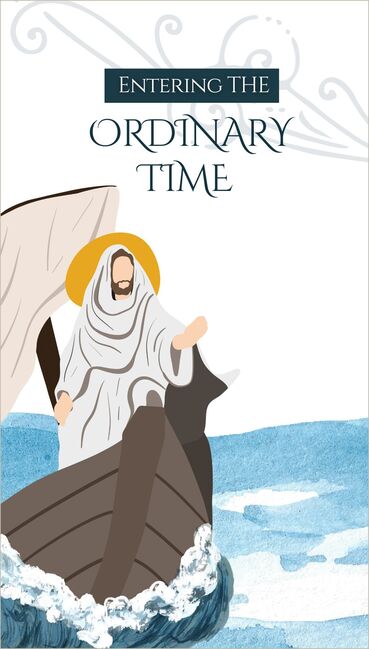




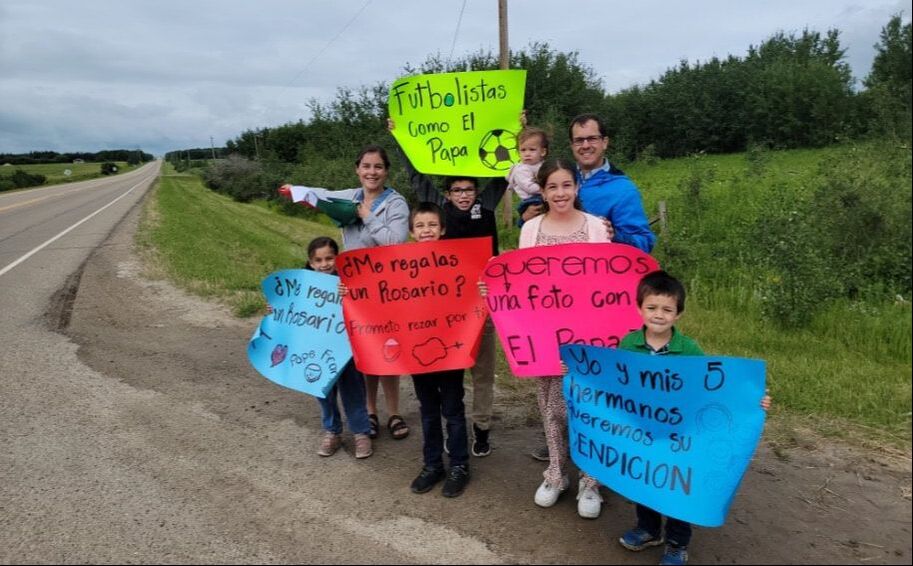





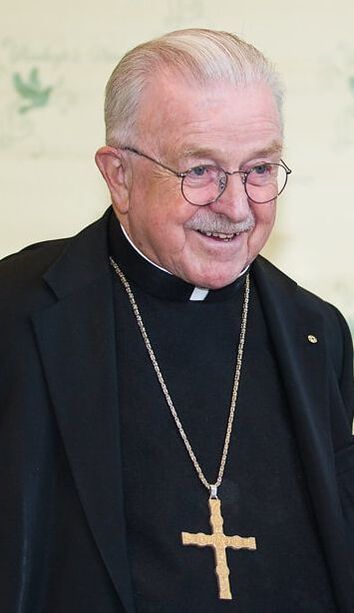



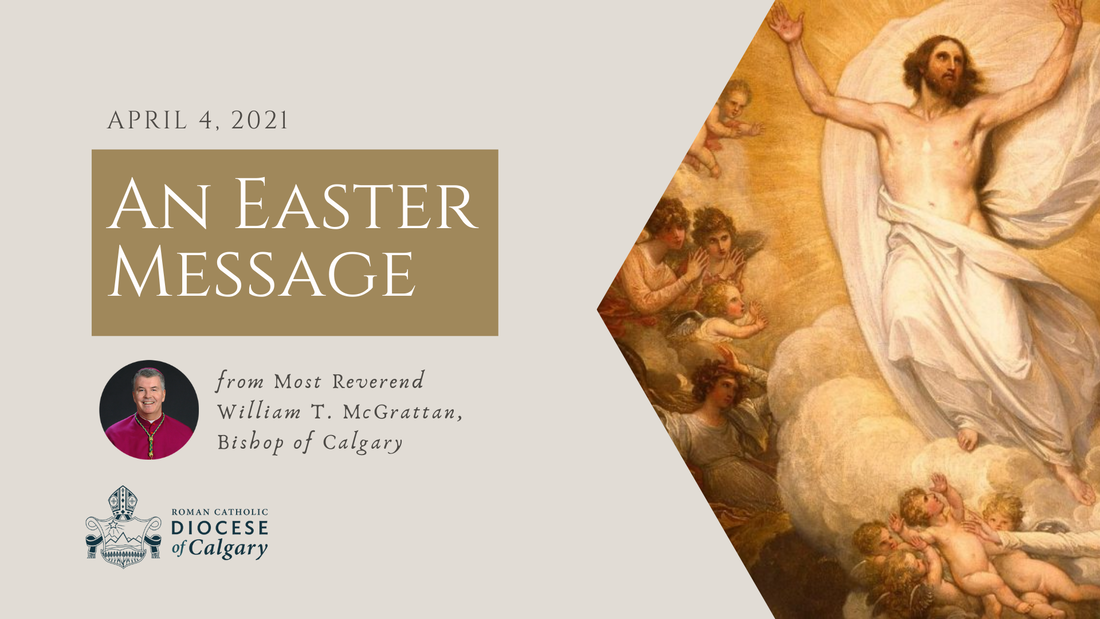
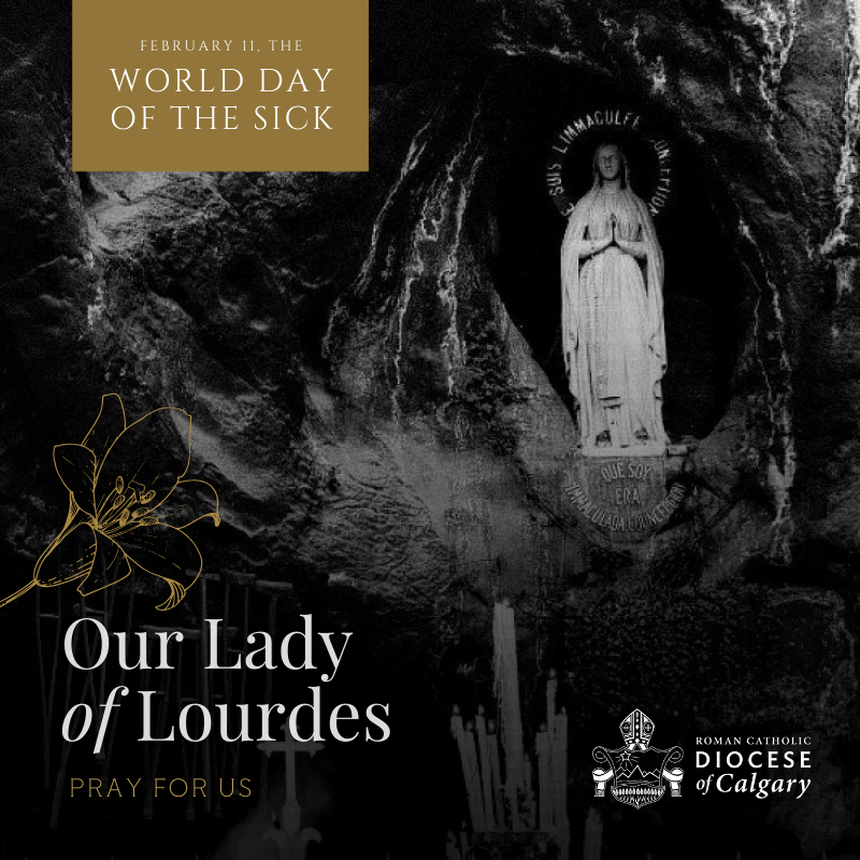








 RSS Feed
RSS Feed